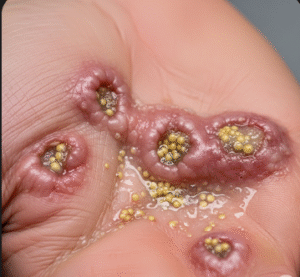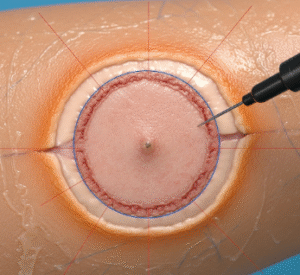Overview
White Coat Syndrome, also known as white coat hypertension, is a condition in which a patient’s blood pressure readings are higher in a medical setting than they are in other environments, such as at home. This rise is often triggered by anxiety or stress in clinical environments, especially in the presence of healthcare professionals wearing white coats. Although often harmless, it can be a warning sign for future high blood pressure (hypertension).
What is White Coat Syndrome?
White Coat Syndrome refers to transient elevation of blood pressure that occurs only in clinical settings. It is believed to be caused by a stress response or anxiety when visiting a doctor’s office. Unlike sustained hypertension, people with White Coat Syndrome usually have normal blood pressure readings at home or during daily activities. However, repeated occurrences may indicate a risk of developing long-term hypertension and cardiovascular problems.
Symptoms
White Coat Syndrome itself often has no physical symptoms, but it may be associated with stress-related responses, including:
- Elevated blood pressure during clinic visits
- Increased heart rate
- Anxiety or nervousness before or during a medical exam
- Flushing or sweating
- Headaches (in some cases)
- Normal blood pressure readings outside the clinic
Causes
The exact cause of White Coat Syndrome is psychological, often linked to:
- Anxiety about medical exams or diagnoses
- Fear of hospitals or medical procedures
- Previous negative healthcare experiences
- Stress or anticipation of bad news
These emotional responses can activate the sympathetic nervous system, temporarily raising blood pressure and heart rate.
Risk Factors
Factors that increase the likelihood of developing White Coat Syndrome include:
- Generalized anxiety or panic disorders
- History of elevated blood pressure readings
- Fear of doctors or needles (iatrophobia)
- First-time medical visits
- High-stress personality traits
- Family history of hypertension
Complications
While White Coat Syndrome might seem harmless, it can have potential consequences, such as:
- Misdiagnosis of chronic hypertension, leading to unnecessary treatment
- Overmedication and side effects
- Increased risk of developing true hypertension over time
- Stress-induced cardiovascular issues in sensitive individuals
- Difficulty monitoring blood pressure accurately for high-risk patients
Prevention
Although White Coat Syndrome may not be fully preventable, certain strategies can help manage or reduce its impact:
- Relaxation techniques before and during doctor visits (e.g., deep breathing)
- Home blood pressure monitoring to get accurate, consistent readings
- Ambulatory blood pressure monitoring (ABPM) for 24-hour tracking
- Cognitive-behavioral therapy (CBT) for managing medical anxiety
- Regular exposure to healthcare settings to desensitize fear
- Good communication with healthcare providers to reduce fear and build trust
Treatment Options in Korea
South Korea offers a variety of approaches to diagnosing and managing White Coat Syndrome through advanced cardiology and mental health services. Available options include:
- 24-hour Ambulatory Blood Pressure Monitoring (ABPM) to distinguish between white coat and true hypertension
- Validated home blood pressure kits and training on self-monitoring
- Stress and anxiety counseling through psychiatry or clinical psychology departments
- Biofeedback and mindfulness programs to reduce physiological stress
- Tailored hypertension management plans, avoiding overtreatment
- Multidisciplinary care in cardiology centers at leading hospitals such as Asan Medical Center, Seoul National University Hospital, and Samsung Medical Center
These centers use evidence-based practices to ensure patients with White Coat Syndrome receive appropriate care without unnecessary medication.













